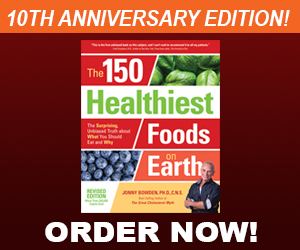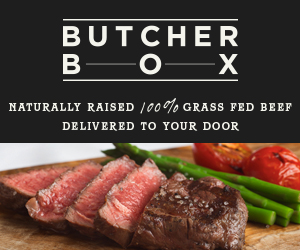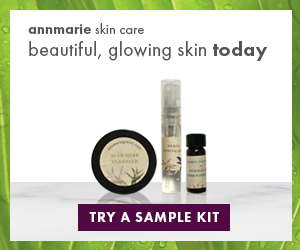By Jonny Bowden, PhD, CNS aka “The Nutrition Myth Buster”™
I’ve spent a large portion of my career fighting the wrongful demonization of dietary fat, trying to set the record straight, and to reclaim respectability for fat in general, saturated fat in particular, and—most importantly—cholesterol. Now it’s time to take on the whole area of cooking oils.

The subject of dietary fat and the subject of cooking oils overlap- but it’s not the same subject. While all cooking oils are made from fat, they have specific properties of their own—how they stand up to heat, for openers. And there’s a lot of misinformation about the best way to use cooking oils so as to get maximum benefit from them.
And there are a lot of myths. Consider:
Extra virgin olive oil is the best stuff ever, you should use it for everything! Coconut oil is a fantastic cooking oil, its saturated fat stands up to high heat beautifully! Canola oil is the healthiest oil on the planet!
Well, if you’re an informed health consumer, you’ve probably heard every one of those statements, and you probably even agree with them. I don’t blame you. Those ideas are deeply embedded in what’s now called “the health space”, meaning places where people talk about, read about, tweet about, discuss, and debate what’s healthy and what’s not.
The problem is they’re not true.
Or at least they’re not completely true. Because with cooking oils the devil is truly in the details. And you simply can’t have a serious discussion about healthy cooking oils without including one absolutely critical detail that no one seems to ever talk about—temperature.
Take extra virgin olive oil, for example, everybody’s poster child for the best oil ever. Extra virgin olive oil is made by simply crushing olives and extracting the juice. It’s made without a hint of chemicals and industrial refinement, and under temperature that will not degrade the oil (i.e. less than 86° F). People pay a lot more money for extra virgin olive oil, and then proceed to use it for all their cooking needs.
Big mistake.
Think about it. Why did you pay such a high premium for extra virgin in the first place? It was to get all those spectacularly healthy olive polyphenols, in virgin condition, undamaged by heat or chemicals. So why in the world would you take this delicate, carefully prepared oil, just dripping with delicate compounds that you paid a lot of money for, and then heat it to a high temperature which is basically guaranteed to destroy most of what you paid for?
Doesn’t make much sense, does it?
Cooks and chefs have a term for the temperature at which oils begin to be damaged—it’s called a smoke point. If an oil is heated until it smokes, the valuable nutrients will be damaged. Worse, the oil itself becomes harmful to ingest. If you take a healthy fat—like for example, extra virgin olive oil, or unrefined coconut oil—and you cook it past its appropriate temperature tolerance you’ve just taken a smart fat and made it into a dumb one.
So pay attention to the temperature guide below, and never use an oil at a temperature that causes it to smoke. (Don’t go nuts around this, though—if you happen to accidentally burn an oil from time to time, just take the pan off the heat, wipe the pan with a paper towel, and start over.)
We suggest you choose 1-2 oils you can use for high heat cooking—like avocado, pecan, extra-light olive oil, or ghee—and let these be your staples for high heat cooking. Medium-high heat oils are the ones you’ll probably cook with most of the time. They’re great for browning meat or poultry, or for cooking vegetables. Good choices: virgin olive oil (not extra virgin), almond oil, hazelnut oil, and macadamia nut oil.
You should probably also choose 1-2 medium heat oils for when you don’t heat a pan past medium heat. Good example: nutrient rich, unrefined coconut oil like Barlean’s, and sesame seed oil.
More nutrient rich oils, like extra virgin olive oil, are wonderful for drizzling or for salad dressings. High lignin flaxseed oil can be used for drizzling or for salad dressings (but never for cooking, ever). Other oils that work well for this purpose—oils that can be used for dressings or sprinkled on dishes for extra flavor after they have been cooked—include sesame, pistachio and walnut oils.
The bottom line: Use the right oil, but use it at the right temperature! That’s just plain smart cooking!
Cooking Heat, Cooking Oils, Smoke Points*
Cooking Heats (°F) Appropriate Cooking Oils
High Heat 450-650° Avocado oil, Grapeseed oil, Pecan oil, Ghee (clarified butter), Extra-light olive oil
******
Medium High Heat 375-449° Virgin olive oil, Almond oil, Hazelnut oil, Refined Walnut oil, Macadamia nut oil, Refined Coconut oil
******
Medium Heat 324-374° Extra virgin olive oil, Lard, Butter, Unrefined coconut oil,
******
Medium Low Heat 250-324° Unrefined sesame seed oil, Unrefined walnut oil
******
Low Heat 225-249° Pistachio oil
Oil Smoke Points (F) Maximum Cooking Temp
Almond oil 430° Medium-high
Avocado oil 520° High
Avocado oil, (virgin) 400° Medium
Butter 350° Medium
Butter, (clarified) 485° High
Coconut oil, (refined) 400° Medium
Coconut oil, (unrefined) 350° Medium-low
Grapeseed oil 485° High
Hazelnut oil 430° Medium-high
Lard 380° Medium
Macadamia nut oil 400° Medium
Olive oil, Virgin 420° Medium-high
Olive oil, Extra Virgin 400° Medium
Olive oil, Extra light 470° High
Pecan oil 470° High
Pistachio oil 250° Low
Sesame oil, (unrefined) 350° Medium-low
Walnut oil, (refined) 400° Medium
Walnut oil, (unrefined) 320° Medium-low
*Table adapted from the forthcoming book, “Smart Fat: Eat More Fat, Lose More Weight, Get Healthy Now!” by Jonny Bowden, CNS and Steven Masley, MD (Harper One, Jan 2016)








Leave A Comment